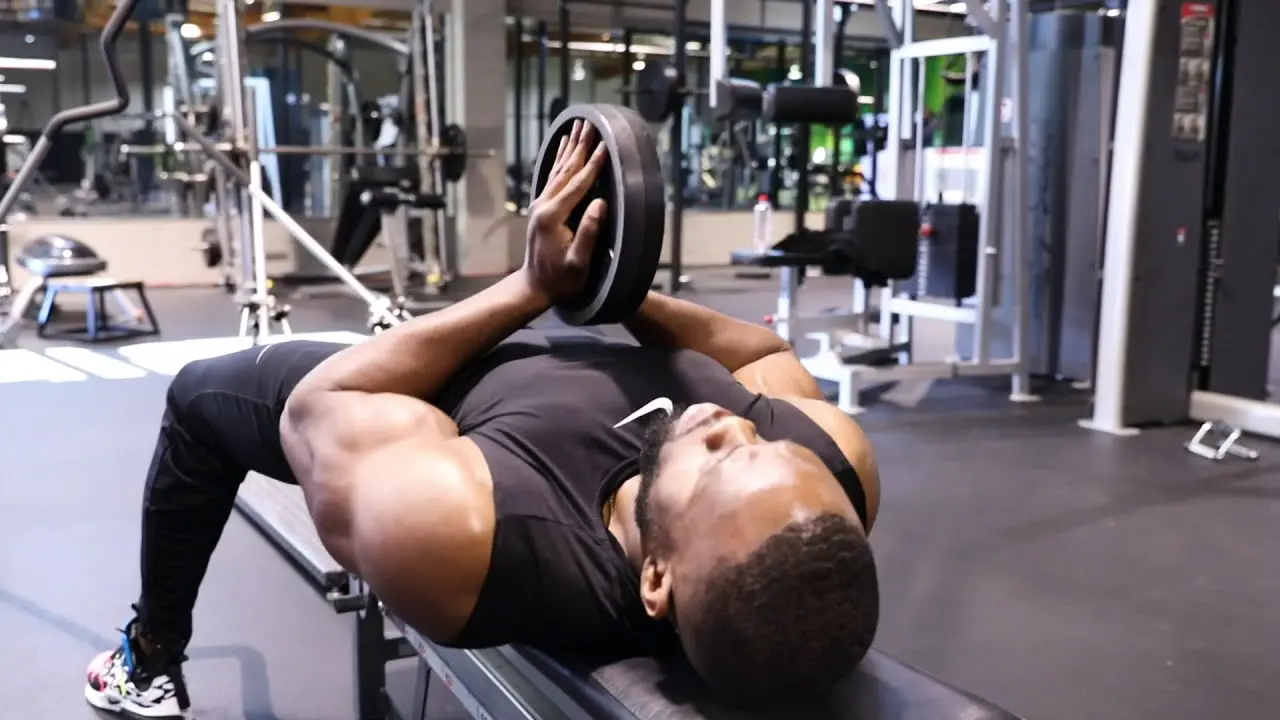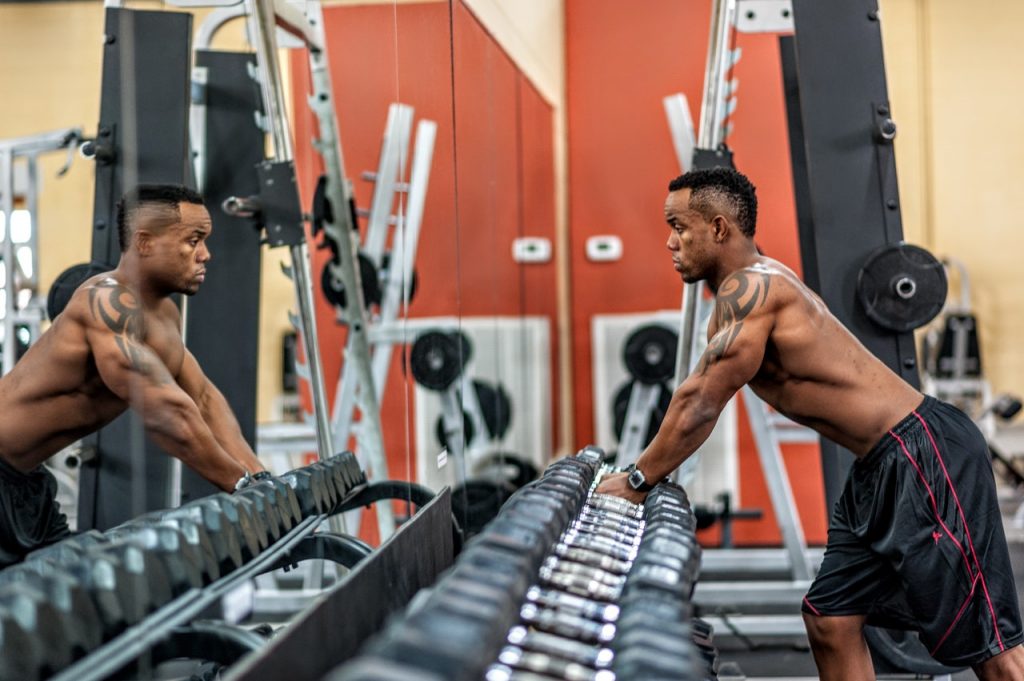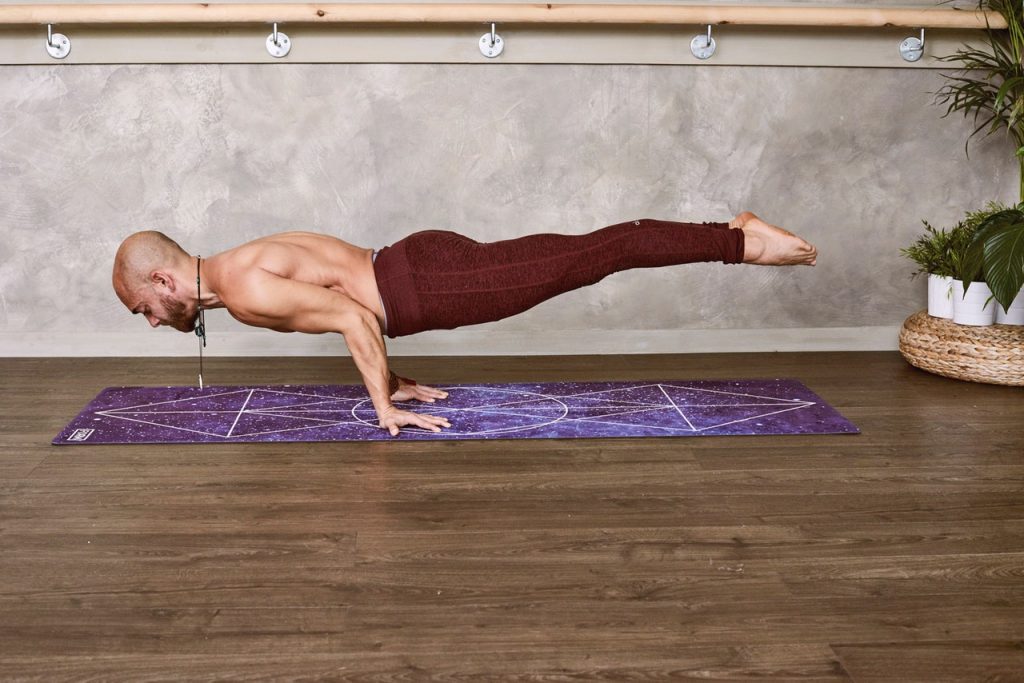
The best online fitness resource you'll ever need. We filter out the BS to ensure you meet your health and fitness goals!

The best online fitness resource you'll ever need. We filter out the BS to ensure you meet your health and fitness goals!

It can be hard to get back into the gym after a prolonged absence. It can also be tempting, when you do get back, to jump straight back in where you left off: pretending the intervening months and years never happened and you’re good to squat, bench and deadlift what you used to be able to, at the same volume, with no consequences.
You should be more cautious than this, however.
Sometimes, a little time off can be a good thing. If you’ve been lifting for any amount of time, hopefully you’ve worked out the value- both to your own health and to your athletic performance- of taking de-load weeks, of cycling intensities, and of taking the odd full rest.
However, this doesn’t count as falling out of regular training. Staying away from the gym because of life commitments, emergencies, injuries and so on does not represent a planned break and is not a factor of a program- it’s the breaking of a program and getting back into a program can be hard. Realistically, just stepping back into the gym after not attending for a long time is its own achievement: if you manage to get to this point, well done. Once there, you really don’t need to do all that much, at least to start with.
If you try too much all at once, you may regret it.
Firstly, DOMS may hit you like a newbie if it’s been even just a month or so, leaving you so sore that you can’t walk the next day and swear off going back to the gym again altogether.
Flexibility and range of motion won’t be what they were, so these will need seeing to. Your skills will have diminished, the mind-muscle connection that we all depend upon in the gym faltering through lack of use. Your strength and endurance will also have suffered (endurance more than strength), so doing the same sets, reps and weights as before will be a definite struggle, will lead to bad form and over-reaching, and over training.
All of these factors will combine to greatly increase your chances of getting injured.
In this article, we’ll go through some of the common pitfalls associated with getting back to the gym after and absence and how to avoid them. By the time you finish, you should know everything you need to in order to make a successful return to training.
Let’s be frank, too: most people are missing the gym at the moment because of Covid-19 lockdown. With this in mind, we’ll also be looking at things you can do to stay safe, and how you can keep others safe, when you do return.

You will not know your fitness level, nor what you can expect in terms of athletic performance, when you step back into the gym after a long break. You will therefore need to lower your expectations across the board and be ready to test yourself gently.
The biggest challenge will be in rediscovering this beginner mindset and allowing your body and mind the time it needs to flounder. You shouldn’t push yourself too hard for the first month, shouldn’t attempt to hit failure on any sets, should not fulfil anything other than a beginner’s volume of lifting, and definitely should not be going for any PRs. This can be intimidating.
The reverse can also be intimidating. Everything above assumes that you’re hitting the gym raring to go, with energy to spare and a young person’s hunger for hard exercise. However, you could equally be nervous- either instead of, or as well as, the above excitement. The idea of large compounds, of set after set, of sore muscles and depleted energy reserves, and of looking like a beginner on the gym floor, can all put you off.
Obviously, try not to let them. As above, you’re putting your beginner’s hat on again. Nobody would judge a beginner for picking up the smaller weights and picking simpler or less challenging exercises. Nobody’s judging you- just get in, do what you need to do, and go home again.
But what do you need to do? Once in the gym, what should your workout physically look like?
Well, one way to go about it is to take up a beginner’s lifting program. There are myriad available online, all cookie-cutter format but mostly workable. Alternatively, you could talk to a personal trainer at the gym and have them put something together for you. Or, you could follow the tips below for a couple of months, before going back into your old style and program, intelligently, safely, and with great expectations of success.
As some basic rules, these are good tenets to bear in mind:
As well as following these, there are some good things you can do in order to prepare your body for the coming few months of training, so that you progress as efficiently and safely as possible. Keep the risk of injury and soreness down, maximise athletic performance, and make sure your gains begin to come as you need them by doing the following.

Plan ahead: work out when you want your first day at the gym to be and spend the week beforehand working on mobility and flexibility.
This will do a few things for you. Mobility will open up the joints and flexibility will stretch out the muscles, bringing a greater blood flow throughout your body. In addition, it will enable you to perform the moves you need to when you hit the gym as you’re able to get into the relevant positions.
Going through even basic mobility protocols will prepare your body for the demands you’re about to be putting on it and will allow you to begin training with a much-diminished risk of injury.
Select 10-15 stretches and mobility drills (many can be found online, or alternatively speak to a trainer or a specialist practitioner like a yoga instructor). Perform each one for a minute every other day. Don’t neglect these as you get started in the gym either: mobility protocols lend you ease and longevity in your training and should never be overlooked.
If you’ve been completely idle for a number of months (desk job, driving everywhere, only hitting a couple of thousand steps per day and never doing any purposeful exercise) you will want to start very small. Begin by just walking around the block, every day, for the week before you first get back to the gym. Treat this as a warm-up to your mobility drills, above.
Then, keep it reasonable in the gym. Go to your level and no higher for a couple of weeks. Don’t dive straight into the aerobics classes or attempt any HIIT or circuit training: again, patience- give your body time.
Of course, if you’ve kept reasonably active during your time away from the gym, you will be more capable. Work up to your level, pushing yourself until your heart rate gets up to 60-70% of its max, but no higher. You can then push this up to 80-90% after a few weeks.
If you’ve followed the advice above for a week (or even two or three), your body will be in a decent enough shape to start training again. After a short spell of mobility and light cardio work, you can bring in a resistance element.
As mentioned above, pick a few compound movements (multi-joint exercises like squats, deadlifts and dips) and run through a few light sets. Don’t begin to get too heavy in the first month. In addition, change your mind-set in the first few weeks. We’re still looking at preparatory work, rather than building any serious muscle.
With this in mind, work on a couple of specific areas that need to be strengthened before you can place your body under heavy load. These are your core muscles and your posterior chain. Keeping these to a decent level of strength will allow you to get back into it properly later on, so focus on them as you get back into training.
Exercises like squats, lunges, bridges, hamstring curls, and core work like planks, layouts and crunches will help with these areas. Begin performing them just using bodyweight resistance to begin with, before bringing in light resistance.
After the first month or so, you will be ready to get back into a more challenging, more global program. Increase intensity, volume and exercise variety.

Several months since most of the world went into lockdown in order to deal with the coronavirus pandemic, it is looking like we will soon be heading back to the gym. Indeed, gyms are already beginning to reopen in some parts of the world. This means that you will likely be getting back into harder training after spending quarantine either being forced to neglect exercise, or at least having to have changed it a fair amount.
We will all have to reacquaint ourselves with training in the gym once more and we will all have to adapt to the new normal that Covid-19 has created.
The virus’ peak has passed- at least, this wave of it has, and experts disagree on whether or not there will be any subsequent waves. Thanks in large part to healthcare workers and emergency responders around the world, and to ordinary people doing what is needed and sequestering themselves in their own home, the immediate, if not long term, threat is diminishing.
There is, of course, some danger and some anxiety about getting back into the world. We will soon be facing the prospect of getting back into the office, seeing schools reopen, seeing high streets get back their normal selves and, of course, leisure activities like gym attendance opening up again. This could be as early as July 2020- for many of us, this cannot come soon enough. But there are precautions that will to be taken if we are to get back into the weights room safely.
For those of us who have kept up some form of training regime- yoga, calisthenics, aerobics, running, hiking and cycling have all seen boosts in popularity during lockdown- our bodies will be quite well prepared for many of the physical demands that hitting the gym will bring. Mobility should be good, as should cardiovascular fitness and training volume capacity. Though it will vary person to person, if you’ve stayed active, you are well placed to get back into the gym, following many of the tips set out above.
For those who haven’t kept up a fitness regime during lockdown (and, of course, for those who will be going to the gym for the first time, either in years or altogether), bodies will be unconditioned. Begin at the beginning, follow all of the above advice in detail, and go easy on yourselves.
Much of the anxiety- justified anxiety, it should be stressed- of returning to gyms revolves around what the safety measures will look like, and how effective they may be. Though we are through the worst of it by most measures, the threat of infection and wider pandemic still looms. Will we be able to adequately safeguard personal health when we get back to the gym?
Healthcare professionals and gym owners are well aware of the dangers that leisure centres can pose. Precautions are being taken at their end. Precautions also need to be taken by gym members: we all need to act responsibly, as we have been doing for months, to keep coronavirus at bay.
There is no way to completely, 100% safeguard against Covid-19, either in the gym or anywhere else. Gym environments are also a lot more problematic than other public areas- far more so than parks and supermarkets. When we train, we breathe hard. We are more likely to release small amounts of spit and phlegm and to cough. If you spray a virus onto a surface- like a barbell or treadmill interface, for example- it will stay there until somebody picks it up again. This, obviously, increases risk of infection quite drastically.
However, this is not to say we shouldn’t be going back to the gym. We are understanding more and more about Covid-19 as the weeks go by. Though much still remains illusory or unknown regarding the virus itself, we can identify common links between those who suffer the worst effects. Perhaps unsurprisingly, the benefits of fitness play a large role. Underlying, base health and fitness is key to combating it efficiently, whilst those who are unhealthy, unfit, and suffer with conditions like obesity and respiratory difficulty are much more at risk in serious and fatal cases.
The hope is, therefore, that people come out of the coronavirus pandemic looking to improve their health and fitness, shaping up their lifestyles to better survive what the future may bring.
There are some precautions that gym owners can take, and that we can take, in order to drastically reduce our risk of infection at the gym. Though it may be hard to imagine attending a gym class or getting stuck into the weights room whilst still socially distancing, it’s possible and practical, and will soon be a reality.
Gyms around the world have been taking measures to make this happen, using really quite simple methods like reducing the amount of equipment on the floor, thus increasing the space between workout stations. Screens between machines have been set up in some centres, notably in Hong Kong. Gyms have also been- or are planning to begin- limiting the number of people allowed in. Classes will have reduced attendees and will ensure that their members are a full two metres apart, using marked floors and longer spaces between the end of one and the beginning of another to stop crowding. Apps can show you how many people are in your local gym, meaning you can see if you’ll be allowed in before you leave the house, and a one-in, one-out policy can keep numbers down so that crowding doesn’t happen.
High energy classes may also need to be put on hold for a little while. It’s easy enough to maintain distance and cleanliness during a yoga session. However, when you’re jumping about in an aerobics class or dancing vigorously, it becomes a lot less practical.
Hygiene will also be highly valued in this fight. Staff will be cleaning equipment more regularly, will be maintaining higher standards in changing room, and will be making sanitising gel available all around the gym.
Ventilation will also need to be looked at, ensuring that clean air is always accessible and old air is recycled out.
This is all well and good on the gym’s part: these are all methods that are either being discusses or, in many places, have already been put into effect. But can you do to remain safe as you start working out again in the gym?

There are several things to bear in mind in order to safeguard your own and other members’ health when returning to the gym. These include:
Whether you’ve been taking time out because of coronavirus, or lifestyle and/or health concerns have kept you away from training, there are some very sensible ways to start working out again at the gym. Follow the above advice, treat your body well, and be sensible as you approach your training, and you shouldn’t go far wrong.
Then, after a month or so, when things begin to normalise, you can up the intensity and do what you need to do.